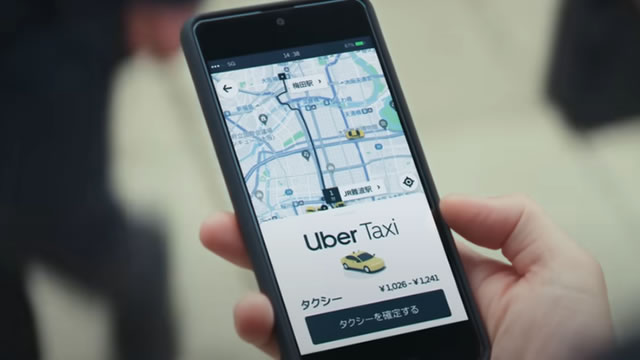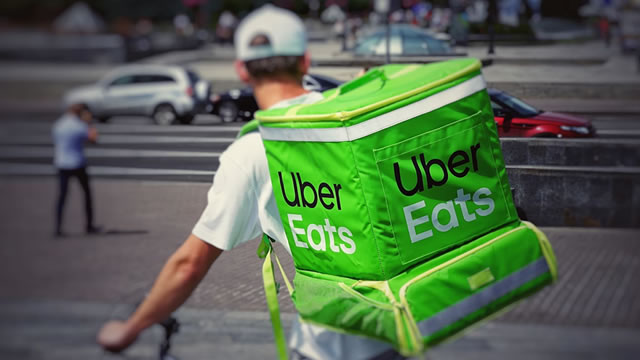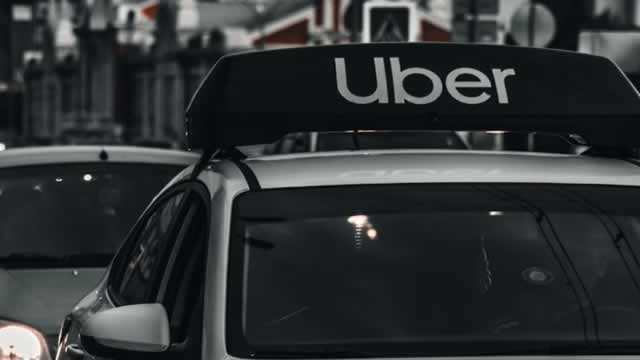
Uber Technologies, Inc. (UBER)
Summary

Uber CEO says robotaxis are a 'trillion-dollar-plus' business — and one market will drive the boom
Uber CEO says one market will lead the robotaxi boom. Dara Khosrowshahi said robotaxis are a "trillion-dollar-plus" industry and Asia has major potential.

Uber Technologies (UBER) Laps the Stock Market: Here's Why
Uber Technologies (UBER) reached $85.65 at the closing of the latest trading day, reflecting a +1.77% change compared to its last close.

Why UBER Stock Could Be Undervalued
Uber Technologies (UBER) stock has decreased by 5.5% over the past day and is currently priced at $84.16. Our comprehensive evaluation indicates that now might be the right moment to acquire additional shares of UBER stock.
Uber Technologies, Inc. (UBER) FAQ
What is the stock price today?
On which exchange is it traded?
What is its stock symbol?
Does it pay dividends? What is the current yield?
What is its market cap?
What is the earnings per share?
When is the next earnings date?
Has Uber Technologies, Inc. ever had a stock split?
Uber Technologies, Inc. Profile
| Software Industry | Information Technology Sector | Dara Khosrowshahi CEO | NYSE Exchange | 90353T100 CUSIP |
| US Country | 31,100 Employees | - Last Dividend | - Last Split | 10 May 2019 IPO Date |
Overview
Uber Technologies, Inc. is a leading global technology company known for its proprietary applications that connect individuals with a variety of transportation, delivery, and logistics services. Established initially as Ubercab, Inc. in 2009, the company rebranded to Uber Technologies, Inc. in February 2011 and has significantly expanded its footprint outside its headquarters in San Francisco, California. Operating across the United States, Canada, Latin America, Europe, the Middle East, Africa, and parts of Asia, Uber is structured into three main segments: Mobility, Delivery, and Freight. Each segment is dedicated to offering innovative solutions that cater to the evolving needs of users and businesses around the globe.
Products and Services
- Mobility
- Delivery
- Freight
This segment connects consumers with various transportation options like ridesharing, carsharing, micromobility (such as scooters and bikes), rentals, and public transit solutions. It spans a wide range of vehicle types to suit different user needs, alongside offering financial partnerships and advertising services. Uber's Mobility services aim to make personal and public transport more accessible and efficient for everyone.
Uber's Delivery services facilitate users in discovering and ordering from restaurants, grocery stores, alcohol vendors, convenience stores, and other retail outlets through its user-friendly platform. This segment not only includes meal delivery but also extends to Uber Direct, which is a white-label delivery solution designed for retailers and restaurants wanting to offer delivery services under their brand. Additionally, Uber provides advertising opportunities within this segment to help businesses reach a wider audience.
Uber Freight connects shippers with carriers through a digital marketplace, simplifying logistics and shipping processes. This platform offers upfront pricing, easy shipment booking, and an on-demand system to automate logistics from start to finish. Whether for small to medium enterprises or global corporations, Uber Freight strives to make transporting goods more efficient and reliable with its innovative technology solutions.







